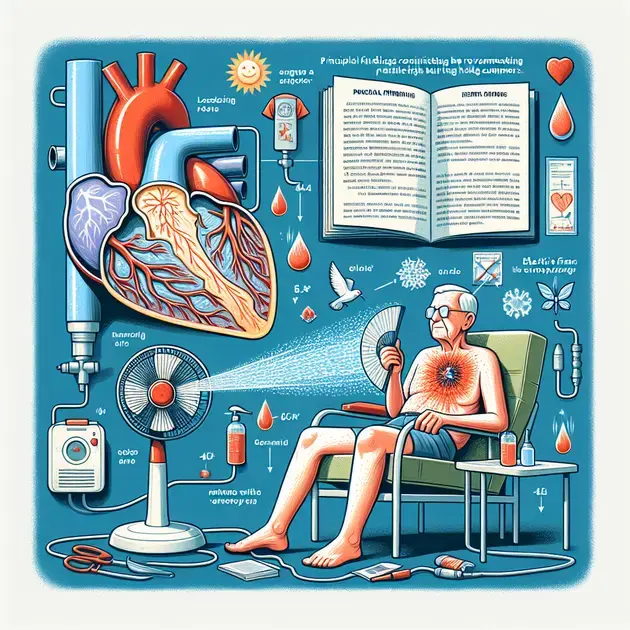Title: Fan Use in Hot and Humid Weather Reduces Cardiac Strain in Older Adults: Challenging Current Recommendations
Introduction:
New collaborative research has recently presented intriguing findings that challenge the long-standing recommendations from the Centers for Disease Control and Prevention (CDC) regarding fan use in hot and humid weather. This study specifically focuses on the impact of various low-cost cooling strategies for older adults, a vulnerable population known to be at increased health risk during hot summer months.
The Study:
The research investigated the effectiveness of different cooling methods, including electric fans alone and fans with the addition of water spraying on the skin, in mitigating cardiac strain among older individuals. Cardiac strain refers to excessive load or stress imposed on the heart, which can lead to serious health complications, particularly in older adults.
Contradicting Recommendations:
The findings of this study appear to contradict the CDC’s traditional standpoint on fan use in hot and humid weather. The CDC has previously advised against using fans as the primary cooling method in these conditions due to concerns about potential dehydration and heat exhaustion. This new research, however, encourages the use of fans, suggesting that they have a positive impact on reducing cardiac strain in older individuals.
Significance for Older Adults:
Older individuals typically experience more difficulty in regulating body temperature due to age-related physiological changes, making them more prone to heat-related illnesses. Therefore, identifying effective cooling strategies for this demographic is crucial to minimizing the risk of cardiovascular complications and other heat-related ailments.
Implications and Practical Application:
The discovery that fan use can decrease cardiac strain in older adults during hot and humid weather has practical implications. Firstly, it counters the current CDC recommendations, which may prompt healthcare professionals to reassess their guidance. Additionally, it suggests that electric fans, a widely accessible and affordable cooling method, can be an effective strategy to mitigate the health risks faced by older individuals during heatwaves and muggy climates.
An Urgency for Further Research:
While these findings challenge the existing guidelines, it is pertinent to acknowledge that this study is not exhaustive, and more research is needed to validate its outcomes. Given the potential impact on public health recommendations, further investigation should be conducted to explore the mechanisms through which fan use reduces cardiac strain and to gain a comprehensive understanding of the benefits and potential risks associated with this cooling method.
Conclusion:
In conclusion, collaborative research has revealed promising evidence regarding the use of fans in hot and humid weather to reduce cardiac strain in older adults. Contrary to current recommendations from the CDC, this study suggests that rather than posing health risks, fans could serve as a simple, affordable, and effective cooling solution for the vulnerable older population during summer months. However, more research is needed to solidify these findings and enable evidence-based recommendations to optimize the health and well-being of older individuals when facing extreme heat and humidity.
